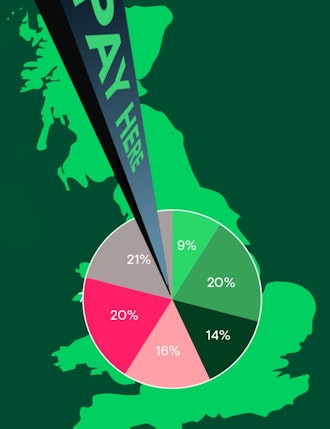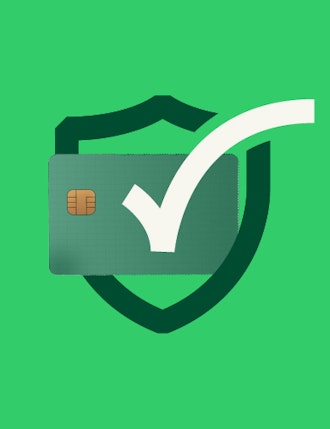Key Insights
-
Machine learning spots fraud in real time, before it hits your merchants or their customers.
-
False declines fall, approvals speed up, and trust grows across every online payment.
-
AI gets smarter with every transaction, while humans keep the context and compliance in check.
-
With payment orchestration, financial institutions, PSPs, and ISOs can roll out AI-driven fraud detection faster and at scale.
Don't have time to read more now? Sign up to our newsletter to get the latest insights directly in your inbox.
Remember when fraud meant blocking the customer too?
That’s how it used to be. Good customers blocked from using their cards, while fraudsters still found their way through. Everyone lost - merchants, banks, and customers alike.
But fraud detection has moved on. With bank fraud detection now using machine learning to detect fraud before it happens, financial institutions, PSPs, and ISOs are now in a great position to give their merchants the best tools to beat fraud.
And fraud detection in banking using machine learning is fast becoming the industry standard. As it reduces false declines, protects revenue, and makes online payments, let’s just say, AI is helping things get a whole lot smarter.
So how does AI fraud detection actually work? And what does it take to apply it across online payments without slowing them down? Let’s break it down.
What fraud detection used to look like
Think about how fraud used to be caught. A customer swiped their card, the system flagged it hours later, and by then the transaction had already cleared. Investigators sifted through false positives, customers couldn’t go through with their purchases, and merchants were left chasing lost sales; the result of unadaptive legacy systems.
Now compare that with AI, which learns and adapts in milliseconds. By analyzing live data streams, payment fraud detection with machine learning spots unusual behavior the moment it happens, cutting down on false declines while still stopping the fraud.
Here’s how the old approach compares against the new one:
Fraud detection - then vs. now
Legacy rule-based detection
Rules updated monthly or quarterly
Catches yesterday’s scams
High false positives (blocks good customers)
Batch processing, delayed alerts
Siloed data, limited visibility
Static blacklists and thresholds
AI/ML-powered detection
Models adapt in real time
Spots new patterns instantly
Reduced false declines, smoother approvals
Real-time scoring in milliseconds
Ingests diverse data streams (transactions, devices, geo, merchant risk)
Dynamic, context-aware risk scoring
In short, the old way slowed everyone down, the new way keeps pace with both fraud and customers. That’s the contrast. But what actually happens when AI steps into a payment flow? Let’s look at the journey step by step…
So, how does AI stop fraud before it happens?
So far, we’ve looked at the contrast: static rules that slowed everyone down versus AI that adapts in real time. But what does that actually look like from your perspective as a merchant-serving business?
When a payment moves through your merchants’ systems, whether it’s an online checkout, a contactless tap, or an in-app transfer, there are multiple points where AI can step in. Think of it as an extra layer that sits between your payment rails and your fraud team.
Here’s how bank fraud detection using machine learning typically works:
- Data ingestion - Every transaction produces a trail of information: payment logs, device fingerprints, merchant IDs, location signals, even past customer behavior. AI systems plug into your payment gateway or core banking platform to capture this data in real time.
- Feature engineering - Rather than analyzing raw data directly, the system converts it into meaningful signals: unusual spending velocity, mismatched geographies, or one device tied to multiple accounts. This happens inside the fraud engine, not at the terminal, so it scales across all channels.
- Model training - Algorithms are built and refined in the background, using historical data as well as new cases. This is usually done in a secure, central environment (for example, on your cloud fraud platform or through your payment orchestration layer).
- Anomaly detection - When a live transaction comes in, the system compares it against what “normal” looks like for that customer, merchant, or device. If something feels off, it raises a flag instantly.
- Real-time scoring - Finally, before the transaction is approved, the AI assigns a risk score. Based on your business rules, that score can trigger instant approval, a soft step-up (like 2FA), or a block. All of this happens in milliseconds, before the payment settles.
In other words: AI-powered fraud detection in banking lives right inside the payment flow. It works invisibly, in real time, so that fraud is caught before it causes losses, while genuine customers move through without interruption.
Are humans a hindrance or a help?
AI can analyze thousands of signals per second, but it works so much better when humans are also involved. The most effective fraud detection setups show exactly where people fit alongside the models.
Here’s how that partnership looks in practice:
- At the scoring stage - The AI assigns a risk score to every transaction. Most low-risk transactions are approved automatically. But when the score falls into a “gray area,” the case is passed to a human investigator.
- In the case management system - Fraud teams get a clear view of flagged transactions: the risk score, the signals that triggered it, and a timeline of the customer’s recent behavior. This context helps them decide quickly whether to approve, block, or escalate.
- Through feedback loops - Every decision a fraud analyst makes feeds back into the system. Confirmed fraud, false alarms, and safe approvals all become new training data. Over time, this sharpens the model and reduces the number of cases that need manual review.
- In model oversight - Beyond day-to-day casework, humans also check the system itself. They test for bias, audit unusual patterns, and adjust thresholds when needed to align with regulations or business priorities.
For financial institutions, ISOs, and PSPs, this partnership is crucial. AI brings the speed to handle billions of transactions in real time, while people bring the judgement to interpret edge cases and maintain customer trust.
Together, they make fraud detection in banking using machine learning more accountable and adaptable, and more importantly, more accurate.
Want to know how AI is and can be used within financial services? Check out our article on the state of AI play today.
Where Aevi uses AI (and why it matters)
Not every part of payments is the right place for AI. Core functions like routing, authorization, and acceptance are tightly regulated for a reason: in those areas, predictability and auditability will always matter more than agility.
Where AI does make sense is in the supporting systems around those processes - the places where complexity slows things down, or where patterns are too large for people to spot alone.
AI shouldn’t be the sole decision-maker on whether payments go through. In-person transactions are already safeguarded by strict rules and regulations to keep fraud to a minimum. Instead, the real value of AI lies in the data space, where machine learning, AI tooling, and modelling can uncover insights, streamline reporting, and support smarter decisions.
On the Aevi platform, that means AI is used to:
- Detect anomalies in terminal or transaction behavior, helping providers act on issues before they escalate.
- Highlight trends across estates, so risks can be anticipated rather than reacted to.
- Predict support needs by learning from usage patterns, reducing downtime for merchants.
- Streamline configuration by suggesting base setups for new merchants or use cases, flagging missing values, and cutting down on trial-and-error.
For merchant-serving businesses, the benefit is simple: faster rollouts, less manual work, and fewer disruptions. That translates into smoother operations for providers, and a more reliable experience for their merchants and end customers.
“AI has a place in payments, but not as judge or jury on whether a transaction goes through. The rules already keep that tight, and we operate in a "fail never" not "fail fast" world. Where it helps is in the messy, high-volume work people can’t see at once - spotting odd behaviour, predicting support issues, and stripping manual effort out of setup. We're focused on where AI adds real value to our products, not on adding 'AI' to a press release.”
Eddie Johnson, CTO, Aevi
For a more thorough understanding of AI’s capabilities within payments, check out our article on how AI in orchestration can be used to improve user experience.
Ready to stop fraud before it happens? Let’s talk about how orchestration and AI can transform your fraud strategy.










